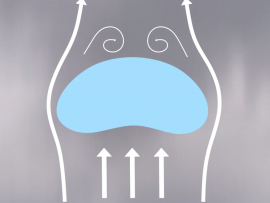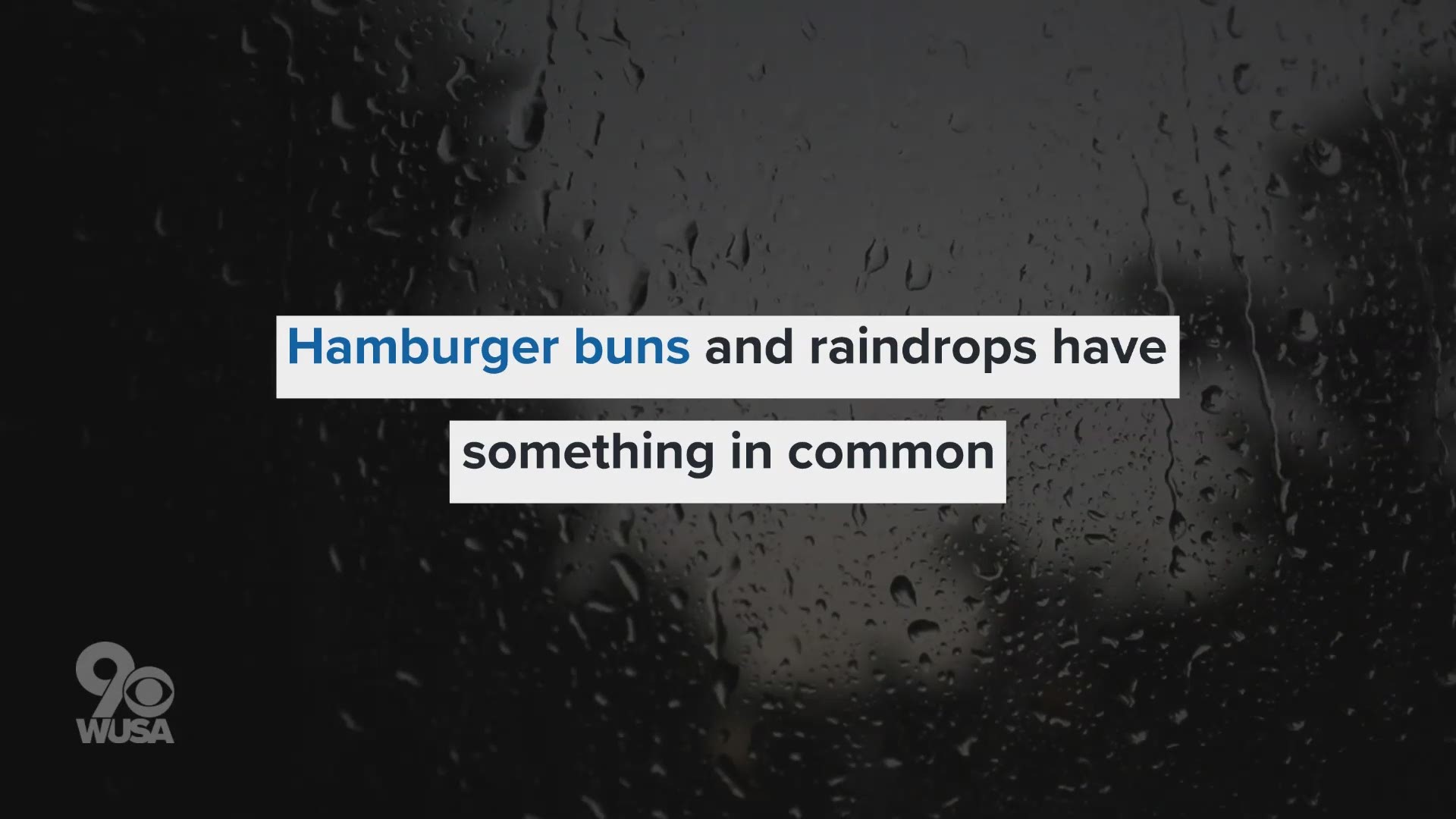WASHINGTON — Most of us have an image of what a raindrop looks like. Some say it's shaped like a teardrop, or it is glamorized to look perfectly round.
In reality, scientists document that raindrops look more like a hamburger bun minus the lettuce, ketchup and mayo.
The short explanation is when raindrops first form they are spherical in shape, but as they fall they take on a hamburger bun shape and become more round at the top and flatter on the bottom. This is primarily due to the fact they the drops are falling and the speed at which they are falling.
So here's what happens, high up in the atmosphere (and I do mean way up there), clouds form when water sticks to tiny particles such as dust or smoke or salt from evaporated ocean water. We call those tiny particles condensation nuclei. (Safe to say water is a little "clingy" and needs something to adhere to).
With the drops being so small and so high up, they are able to hold on to their shape because of surface tension. You can think of surface tension as water molecules just wanting to be together. The U.S. Geological Survey provides this explanation on its website.
"Water molecules want to cling to each other. At the surface, however, there are fewer water molecules to cling to since there is air above (thus, no water molecules). This results in a stronger bond between those molecules that actually do come in contact with one another, and a layer of strongly bonded water."
That works out great when the drops are tiny and high up in the atmosphere, but once the drops start falling things change. NASA notes that the air flowing around the bottom raindrop is greater than the air flowing around the top and the drop. This causes it to lose that surface tension at the bottom.

At some point, the drops grow by colliding with one another and once the drops are too big, they break apart. Another loss is for surface tension. The bigger the raindrop, the faster it falls. Here's a look at video from NASA showing how a raindrop takes shape.
By the way, what's the speed that the raindrop is falling? That depends on the size. The Weather Guys at University of Wisconsin-Madison, said the tiniest raindrops can fall at 2 mph. Larger raindrops can fall at 10 meters per second or about 20 mph!


